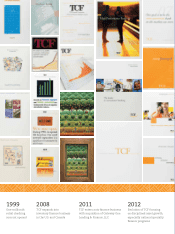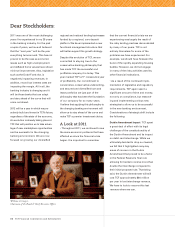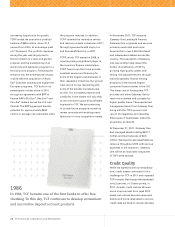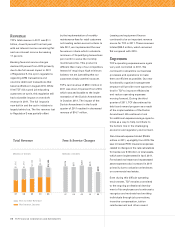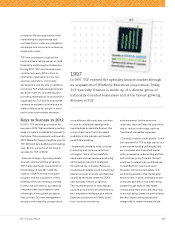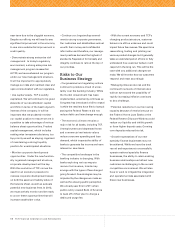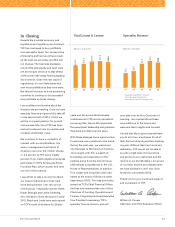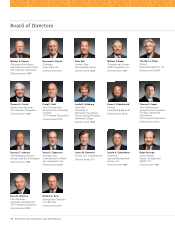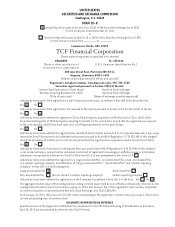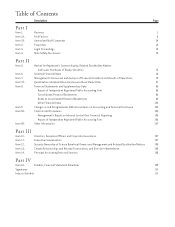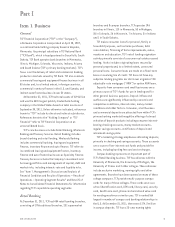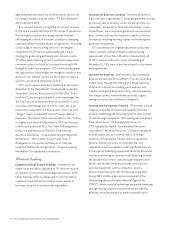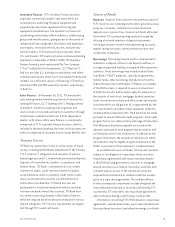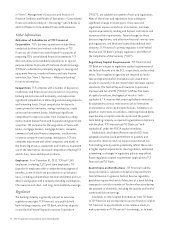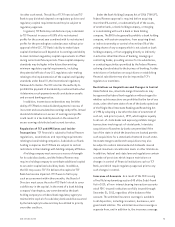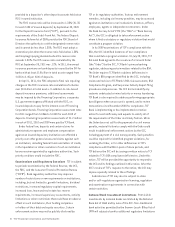TCF Bank 2011 Annual Report Download - page 14
Download and view the complete annual report
Please find page 14 of the 2011 TCF Bank annual report below. You can navigate through the pages in the report by either clicking on the pages listed below, or by using the keyword search tool below to find specific information within the annual report.
near-term due to the sluggish economy.
Despite our efforts, we will need to see
significant improvement in the economy
to see more substantial improvement in
credit quality.
• Demonstrate strong enterprise risk
management. In today’s regulatory
environment, a strong enterprise risk
management program is essential.
At TCF, we have enhanced our program
under our new management structure.
It will be important to appropriately
manage our risks and maintain clear and
open communication with our regulators.
• Use capital wisely. TCF is solidly
capitalized. We will continue to be good
stewards of our stockholders’ capital
and think in terms of the best long-term
interest of the company. It will be
important that we prudently monitor
our capital position to ensure we are in
a position to take advantage of various
balance sheet opportunities. Prudent
capital management, which includes
making wise investment decisions, is a
top priority as well as staying cognizant
of maintaining a strong liquidity
position for unanticipated situations.
• Monitor corporate development
opportunities. Under the new function-
ally organized management structure,
corporate development will be key.
With this evolution of TCF comes the
need for an executive presence to
oversee corporate development issues
on both the asset and liability sides of
the balance sheet, as well as evaluate
potential new business lines. In 2012,
we must actively monitor and be ready
to act on these opportunities that will
increase stockholder value.
• Continue our longstanding commit-
ment to strong corporate governance.
Our customers and stockholders entrust
us with their money and confidential
information and therefore, our manage-
ment practices demand the highest of
standards. Reputation for honesty and
integrity continues to rank at the top of
our priorities.
Risks to Our
Business Strategy
• Congressional and regulatory actions
continue to produce a cloud of uncer-
tainty over the banking industry. While
the Durbin Amendment has been
implemented, uncertainty continues as
Congress has introduced a bill to repeal
it while the retailers have filed a lawsuit
stating the Federal Reserve did not
reduce debit card interchange enough.
• The economic climate remains a
major risk for all banks, including TCF.
Unemployment and depressed home
and commercial real estate values
reduce consumer spending and loan
demand, which impacts the ability of
banks to generate fee income and earn
interest on new loans.
• The competitive landscape in the
banking industry is changing. With
banks exploring various ways to
recover lost revenue, trends may
emerge with the types of fees charged
going forward. Fee strategies may be
impacted by the changes we make as
well as the ensuing public perception.
We already saw this in 2011 when
public outcry caused Bank of America
to back off of their plan to charge a
debit card usage fee.
10 TCF Financial Corporation and Subsidiaries
• With the current economy and TCF’s
changing product structure, customer
behavior is still an unknown and could
impact future fee revenue. We spent time
researching, testing and piloting our
various product changes but it generally
takes an extended period of time to fully
understand how customer behavior will
respond in the long run. This will be the
case with any additional changes we
make. We will monitor how our customers
respond and react accordingly.
• Managing interest-rate risk and the
continued low levels of interest rates
with an eye toward the possibility of
rapidly increasing inflation continues
to be a challenge.
• Potential reductions in our borrowing
capacity because of restrictions put on
the Federal Home Loan Banks or the
Federal Reserve Discount Window could
reduce our liquidity and inhibit growth
or force higher deposit costs. Growing
core deposits reduces this risk.
• Growth expectations of our new
specialty finance businesses may not
be achieved. While we have the track
record and experience to successfully
operate national specialty finance
businesses, the ability to retain existing
business relationships and attract new
customers is challenging in the current
competitive environment. We will also
have to work to mitigate the integration
and operational risks associated with
these new businesses.


